Fungal disease possible cause of Camellia's black leaves
I bought this Camellia plant during a Chinese New Year sale last year. It was healthy and had many flowers. I placed the plant in a spot facing north-west. Recently, the leaves started to wither and turn black. The plant also looks sick. Why has this happened?
Tan Seng Tee
The symptoms could be due to fungal disease or root disturbance that causes the stems to dieback, which is when the plant starts to die from the tip of its branches.
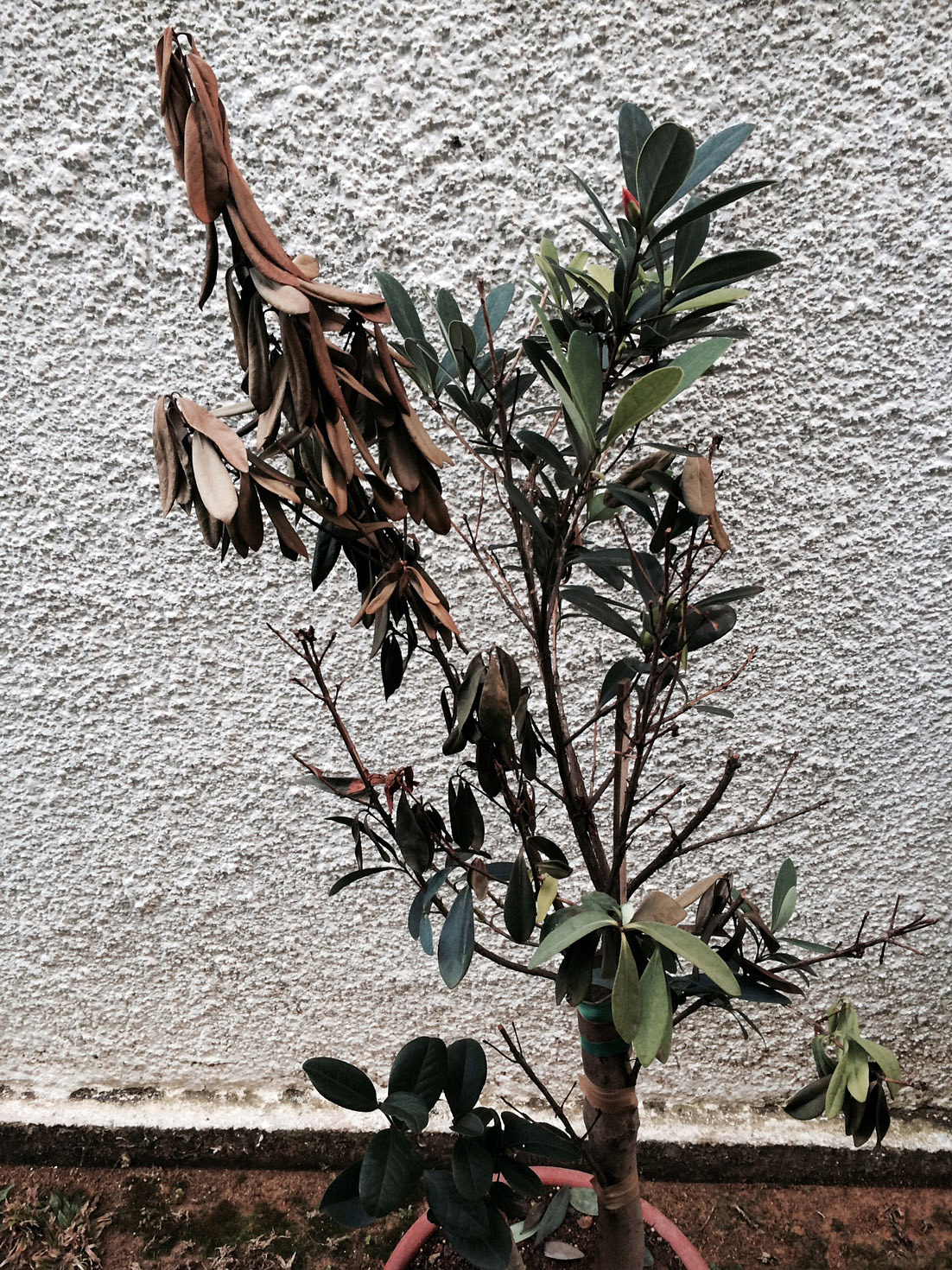
Fungal disease can occur if the roots are constantly wet.
This type of Camellia (Camellia changii) is often grafted on a Camellia japonica root stock. So check that the graft union is still intact and healthy. If the health of the grafted portion is compromised, it can also lead to dieback.
Application of a chemical fungicide may help to some extent to control the spread of the disease.
Did you move the plant or repot it recently? Any damage to the roots can also cause branch dieback as shown in the picture. Once the root system recovers, new growth may occur on other parts of the plant.
An overdose of fertiliser can damage the roots, leading to similar symptoms. In this case, you may want to flush the root system with water to wash out excessive fertiliser salts. Stop feeding the plant for a month or two until new, healthy growth shows.
Also, avoid putting the plant in an overly windy place or near exhaust vents of an air-conditioner.
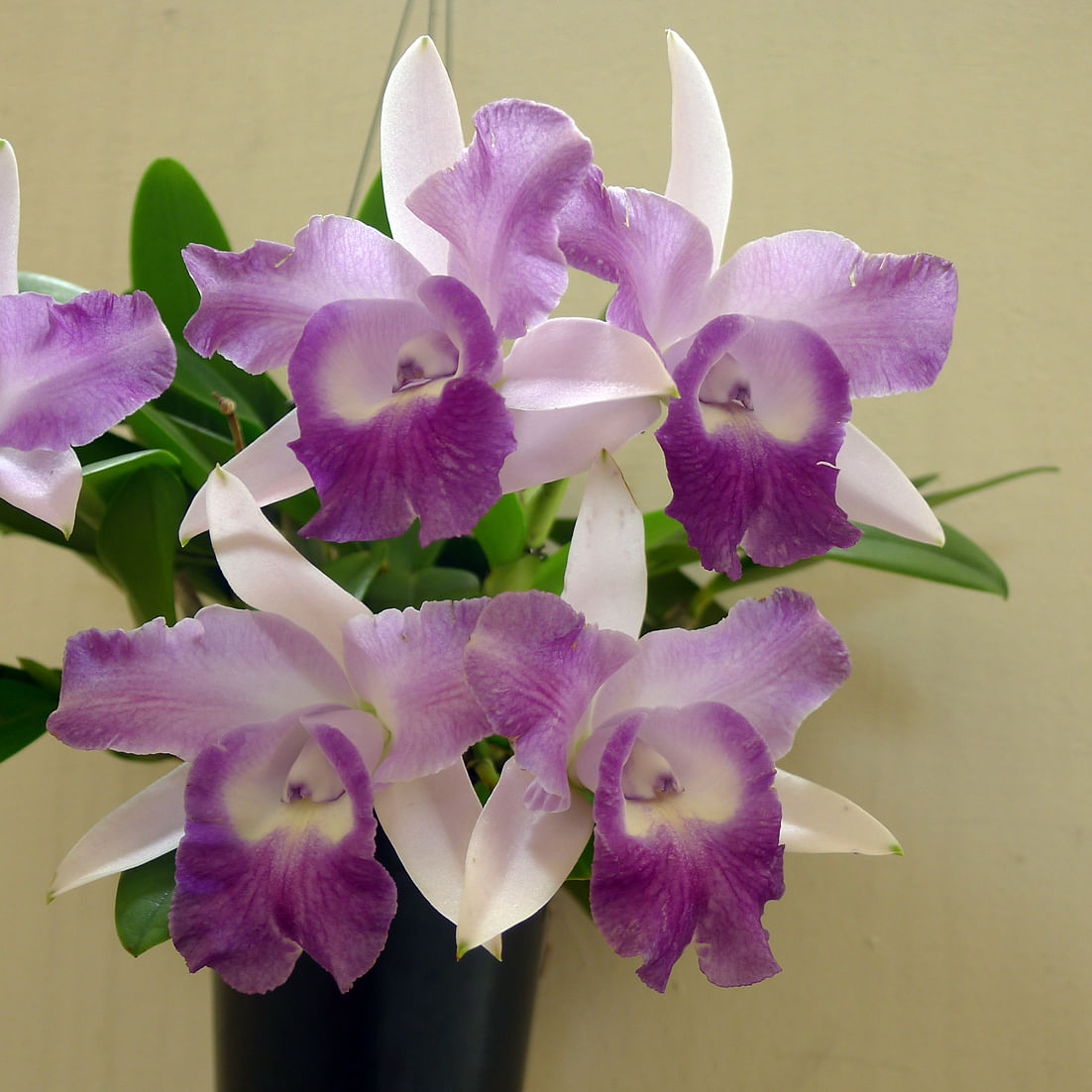
Tip: "Angel Kiss" a good orchid for budding gardeners
A intergeneric hybrid, Laeliocattleya Cariad's Mini-Quinee "Angel Kiss", is a rewarding, compact-growing orchid to have if the plant can get filtered sunlight for at least four hours daily. It can be placed on the balcony, corridor or a sheltered spot in an outdoor garden.
The plant is a prolific and regular bloomer that produces attractive and long-lasting flowers.
It is an epiphyte and is best potted using an open medium such as small charcoal chips. It responds well to regular feeding with a water-soluble orchid fertiliser.
It is an orchid that is great for beginners.
Get a flowering specimen and place it in an ornate pot to herald the Chinese New Year.
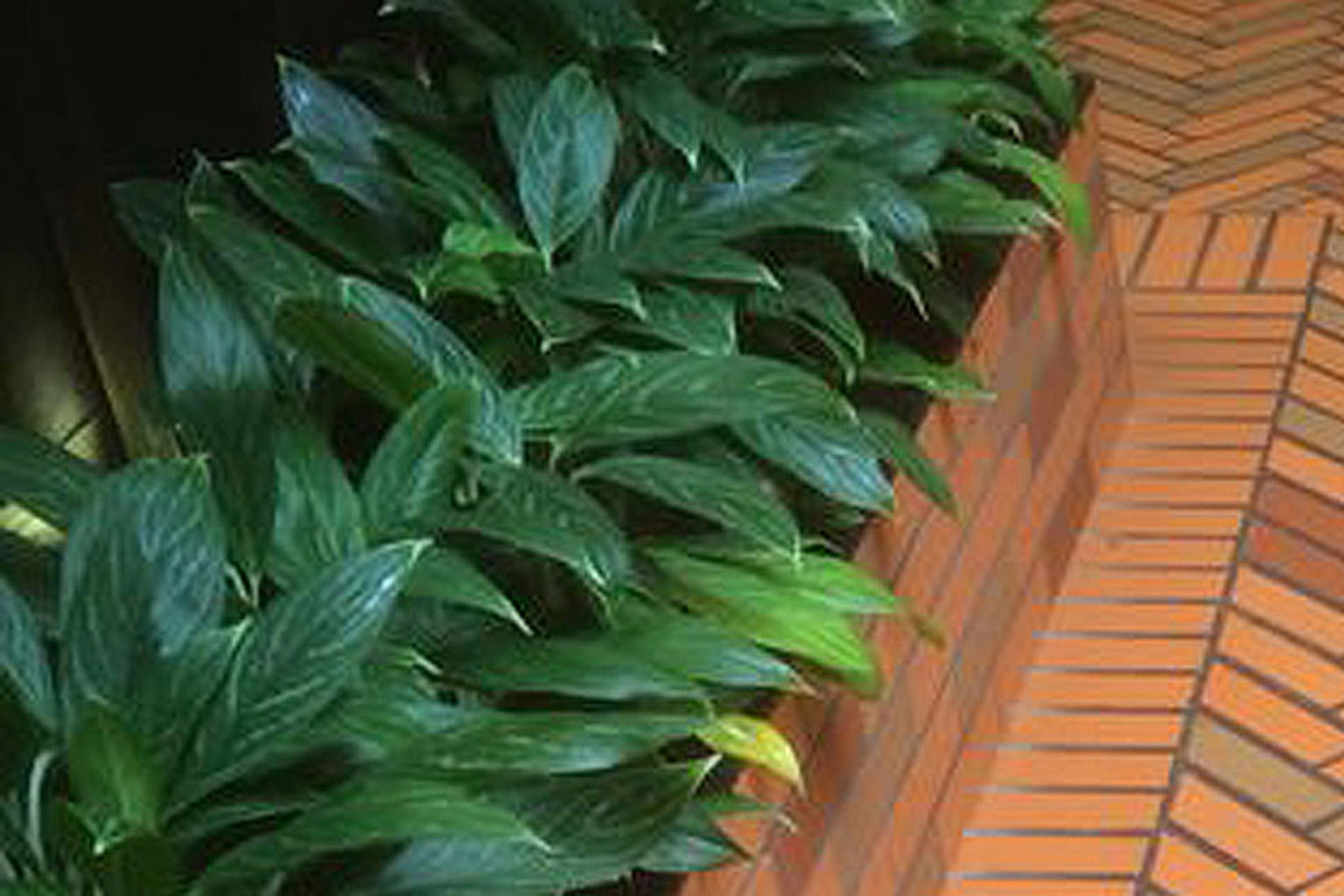
Filtered sunlight for Chinese Evergreen to thrive
What is the name of this plant and where do I buy it?
Victor Lee
It is a cultivar of the Chinese Evergreen (Aglaonema). You can buy cultivars from nurseries such as Hua Hng Trading Co in Bah Soon Pah Road and Far East Flora in Thomson Road.
The numerous cultivars of the Chinese Evergreen are often sold as indoor plants as they are tolerant of low light.
However, these plants prefer to be grown in an area with at least some filtered sunlight for a minimum of four hours daily.
They should not be grown under direct sunlight as the intense light rays will burn the leaves.
Note that indoor plants on display deep inside the house are considered in deep shade and even the most shade-tolerant plant will slowly deteriorate if it is not moved to a brighter place to recuperate.
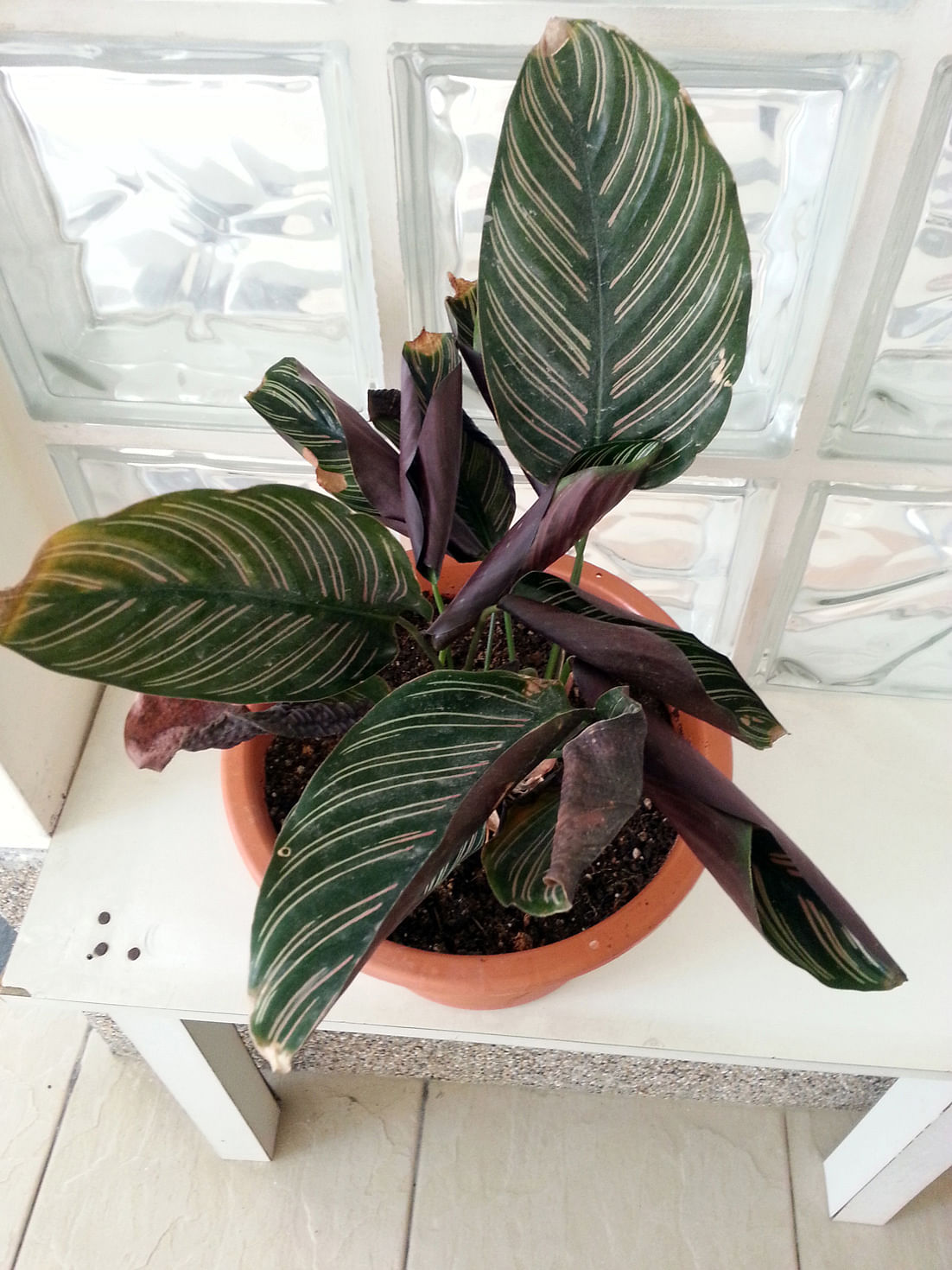
Curling leaves due to growth area's low humidity
What is this plant and why do its leaves curl up like a tube? I leave it on the verandah, where there is no direct sunlight.
Andrew Siow
The plant is a cultivar of Calathea ornata and is a member of the Prayer Plant family (Marantaceae). Plants from this family often require an environment with high humidity to grow well.
In an apartment, the air humidity is often low and, on a balcony or verandah which gets constant wind, the plant can dry out, resulting in leaves curling up.
To grow this plant well, it is important to place it in a location where it can get filtered sunlight for four to six hours daily.
You can also grow it among other foliage plants. The transpiration process by neighbouring plants and clustering them help to create and maintain a humid micro-climate around the Calathea ornata plant.
However, be mindful not to place the plants too close together. A lack of air circulation can lead to a host of other problems such as fungal diseases.
Also, do not have too many taller plants around as they can block out sunlight, which is essential for growth.
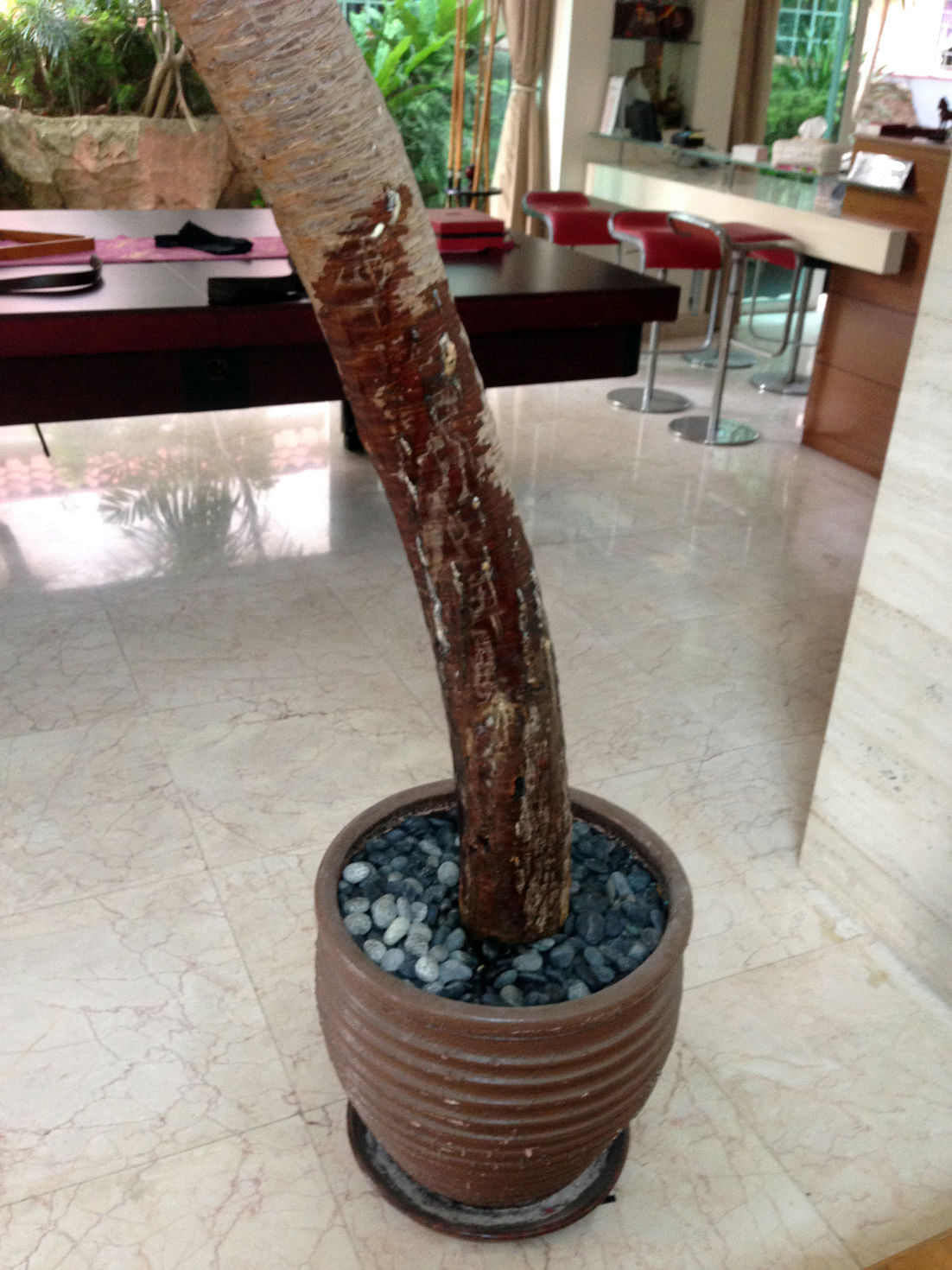
Rot disease and lack of sunlight afflict Dracaena
I have kept this plant in my living room for about a decade now. It has grown by more than 1m and the trunk gets thinner as it grows taller. Lately, the trunk also seems to be diseased. What is wrong with it?
Wong Thim Muan
The stem of your Dracaena plant appears to be affected by rot disease.
The plant might be experiencing prolonged wet feet caused by excessive watering or soil that retains too much moisture due to high clay content.
Do note that many plants benefit from a little drying out of the root zone so that air can get to the roots.
Saturated soil lacks oxygen and roots will die if they are in such conditions for prolonged periods.
You may be able to save the plant by cutting the top off and placing it in some fresh potting media. Roots will grow after some time.
As for the stem getting thinner, it is a symptom of insufficient light.
The Dracaena is often sold as an indoor plant as it is tolerant of low light.
In general, these plants prefer to be grown in an area which has some filtered sunlight for at least four hours daily.
Even the most shade-tolerant plant will slowly deteriorate if it is not moved to a brighter place to recuperate.
• Answers by Dr Wilson Wong, a certified practising horticulturist and founder of Green Culture Singapore (www.greenculturesg.com). He is also an NParks certified park manager.
• Have a gardening query? E-mail it with clear, high-resolution pictures of at least 1MB, if any, and your full name to stlife@sph.com.sg
